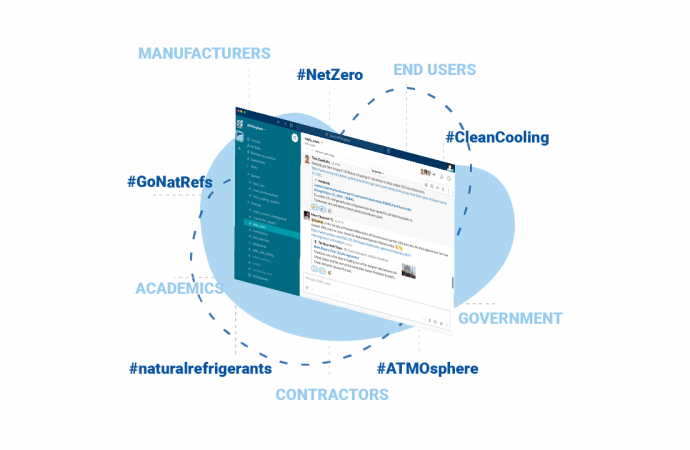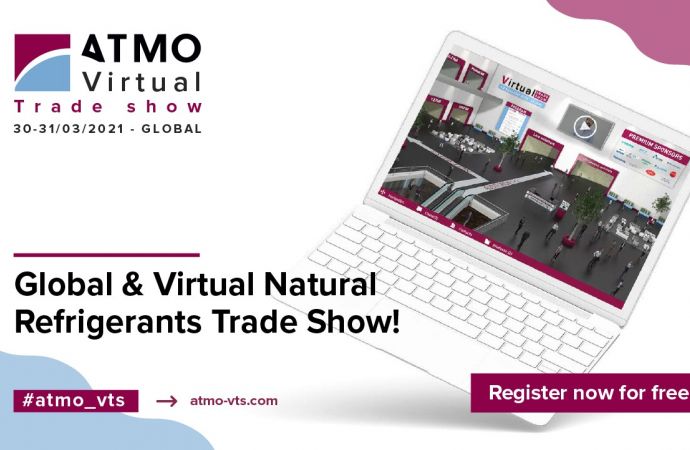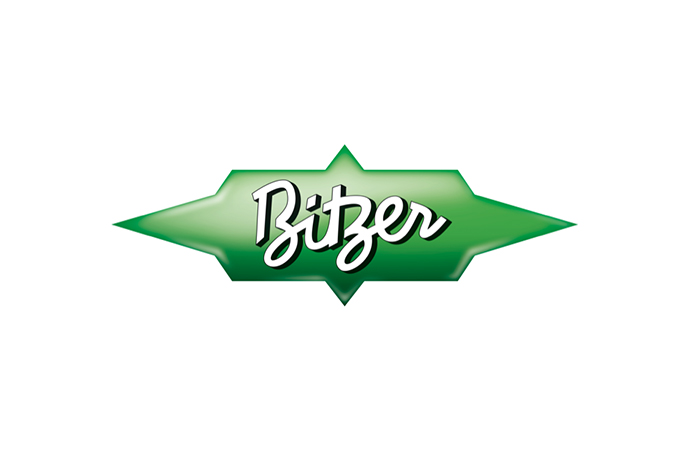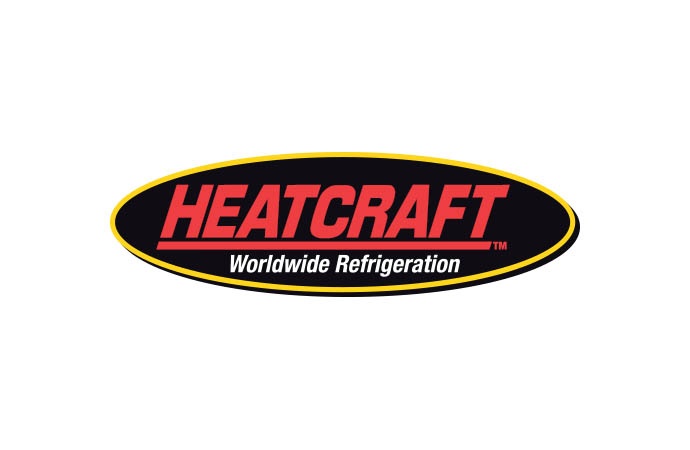In addition to featuring a number of low-charge ammonia products, the IARW-WFLO Convention & Expo, held in Orlando, Florida on 26 – 19 April, included several exhibitors promoting CO2-only and ammonia/CO2 refrigeration systems. While CO2 is still relatively new for the refrigerated warehouse operators attending the show, it is slowly gaining traction as an alternative to traditional high-charge ammonia systems.

Hillphoenix’s transcritical system works in industrial settings as well as supermarkets
Hillphoenix’s CO2-only Advansor transcritical systems, which are beginning to be used in U.S. supermarkets, can accommodate a cold storage warehouse requiring 200 TR, said John Gallaher, vice president of industrial refrigeration for the company. “We can go higher than that by adding racks,” he added.
In contrast to the transcritical installations at supermarkets, those used by cold storage warehouses are more likely to use heat recovery, noted Gallaher.
An example of a current transcritical facility is Caputo’s, which uses multiple Hillphoenix racks in a hybrid retail/warehouse/food prep facility in a store near Chicago. “Over three-quarters of the load is for cold storage,” he said.
Hillphoenix has also installed transcritical systems in an apple storage facility in Canada and a pharmaceutical warehouse. Transcritical CO2 systems allow industrial end users to “get out of ammonia,” said Gallaher. “Some are interested.”
Bitzer sees growing interest in CO2
Art Mathews, business development manager, industrial products, for Bitzer observed that at the IARW show there was “a lot of interest in CO2, both ammonia/CO2 and CO2 transcritical. Everybody wants to reduce ammonia charge or get out of HFCs.”
As an example of an ammonia/CO2 system using Bitzer compressors, he cited a US Cold Storage facility in Lumbarton, N.C., that just finished building an add-on blast freezer. “It has 12 30-horsepower Bitzer CO2 compressors, each with a variable frequency drive so you can get more capacity and adjust the load.”
Cold storage companies from Quebec, where ammonia is avoided, are looking at CO2-only transcritical systems, he added.
Cimco Pushes CO2 and NH3/CO2
Another observer of trends in Canada, David Sinclair, general manager, Ontario, for Cimco Refrigeration, echoed the notion that Quebec “doesn’t embrace ammonia like the rest of Canada,” using Freon instead. However, end users in Quebec are now “looking at CO2 as a replacement for Freon.” Cimco is a major supplier of CO2 systems.
Throughout North America, Cimco is marketing Mayekawa’s NH3/CO2 NewTon cooling system. In one warehouse in California, an end user is comparing the energy efficiency of a NewTon freezer system to that of an HFC system, said Hanks McCrory, Cimco’s business development manager, national accounts.
Heatcraft’s NH3/CO2 system suited for supermarkets and warehouses
Heatcraft highlighted its ammonia/CO2 cascade refrigeration rack, which is being deployed at a Piggly Wiggly supermarket opening this fall in Columbus, Georgia, about two hours south of Atlanta. The system is also designed to serve refrigerated warehousing and food processing applications.
The system locates the NH3 rack on the roof of a building, and a CO2 rack inside. The low-charge NH3 (400-500 pounds or 181.4 to 226.8 kg) is restricted to the roof, and is cooled by glycol that rejects the heat in a separate evaporative cooler. Meanwhile CO2 is cooled in the NH3 rack, liquefied and distributed through the building, as liquid brine pumped to medium-temperature applications and separately through a DX line to cold-temperature areas.
The Piggly Wiggly system has a capacity of 100 TR, but with an additional rack the system can be scaled to 250 TR, said Ajit Kailasam, cold storage manager, Heatcraft. The store is also installing a parallel R407 rack (also using CO2 as a coolant) so that an “apples to apples” comparison can be made with the NH3/CO2 system, he added.
Heatcraft’s cascade system can use glycol instead of CO2 to produce cooling. The company also has a transcritical CO2 system that has not yet been deployed.
Frick’s new controller
Frick’s new controller
Frick showcased its latest control system, under the HD Unity brand, which was released May 5. The system, which works with any refrigerant, controls an entire refrigeration system, said Mike Colley, air side product manager for Frick, adding, “It can connect to an iPad.”
M&M’s leading role in NH3/CO2
Charles Toogood, vice president of business development for M&M Refrigeration, was a pioneer in the implementation of ammonia/CO2 systems when he worked as vice president of engineering at United States Cold Storage. He was responsible for introducing the first NH3/CO2 cascade system there a decade ago, as well as five more; US Cold Storage now has 11 facilities using the system, which cuts the ammonia charge dramatically, reassuring the communities in which the warehouses reside. US Cold Storage uses between 5,000 and 8,000 pounds (2,268 and 3,628.7kg) of ammonia in its cascade systems, and between 20,000 and 48,000 pounds (9,071.8 and 21, 772.4 kg) of CO2.
We proved to ourselves that ammonia/CO2 was lower charge and more efficient,” he said. “PG&E (Pacific Gas & Electric) did an energy survey and found that the system was 5.6% more efficient than a two-stage ammonia system.” As a result, US Cold Storage received energy rebates.
While he was with US Cold Storage, Toogood’s supplier of NH3/CO2 systems was M&M, which he eventually joined. Today, more than 40 companies worldwide use M&M’s ammonia/CO2 system. When end users remain skeptical, Toogood advises them to simply ask one of the companies that have the system for a reference. “It works,” he said.
Ammonia/CO2 works in a range of facility sizes. Larger facilities benefit from the lower installation costs that come with using smaller CO2 piping.
MORE INFORMATION
Related stories









